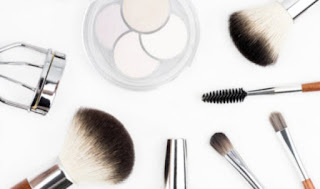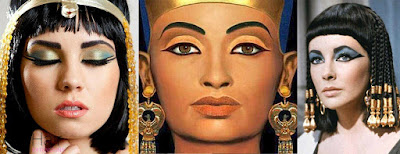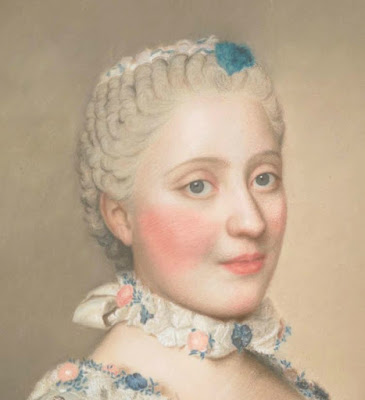A History Of Cosmetics And Makeup Through The Ages It might seem like women’s makeup is a fairly modern social norm but the practice of cosmetics is a really old concept. Here is some history of makeup through the ages behind why women are always having to wear make-up now and first makeup brand and ancient cosmetics brand.
With all the billions of dollars spent every year worldwide evolution of makeup trends on cosmetics sometimes we may find ourselves asking how has makeup changed the world “How did it get to this point? When did it become the norm for me to have to wake up every morning and before I even go out the door I get to paint my face from top to bottom? Surely a woman way back in history didn’t just wake up one day and apply eyelashes, lipstick, eyeliner, foundation, and rouge all at the same time. No, it was, like many things, a culmination of things from the past.
Remember the Egyptians? That was over four thousand years ago. Cleanliness and appearance were terribly important to the Egyptians. They believed the appearance was in direct link with the health of the soul. They strived to always look and smell good. And with a society who values their appearance, you’re inevitably going to have people who are going to make themselves stand out. But the Egyptians, being the innovative people they were, used cosmetics for reasons that were even smarter than just trying to look good.
Mesdemet was the earliest kind of eye shadow- a substance made of copper and lead ore. The dark shades they believed would ward off evil eyes to their own. It was also a great disinfectant and insect repellant. Kohl was a dark powder that was also applied around the eyes in an oval shape. It was a combination of lead, ash, ochre, copper, and burnt almonds. To further enhance their appearance, they would apply a mixture of water and red clay to the cheekbone area. They would also paint their nails colors of orange and yellow with a substance called henna.
As time moved on and cultures were exposed to each other more and more, the Greeks began to pick up on the many practices of the Egyptian’s use of cosmetics. They would give themselves a pale color with a foundation that contained lead in it. This proved fatal on more than one occasion. As the Romans began to pick up the cosmetics practice, the pursuit of beauty became much less about functionability and took a turn into much more exotic routes. The Romans would paint their nails with a combination of sheep’s blood and cooked body fat. An ancient Roman man once said, “A woman without paint is like food without salt.”
For centuries after the Egyptian empire faded, the fashion norm around the world was a pale complexion. A tanned, sun-dried face was associated with being a commoner who worked out in the field all day alongside her husband. The upper class ladies of course did not participate in physical labor like that so they stayed inside and had white faces.
A white, pale complexion was also a symbol of wealth. If you had enough money, then you didn’t have to work. So a pale complexion was extremely important to some people. To get this look, women and men too would use a combination of hydroxide, lead oxide, and carbonate in a powder form to paint their faces and bodies. Unfortunately, this lead to a sometimes fatal side effect, lead poisoning.
To remedy this, chemists in the nineteenth century finally discovered a mixture of zinc oxide that didn’t block the skin from being able to breathe and kept people out of that irritating lead poisoning sickness. It worked so well that it is still used today by cosmetics manufacturers.
In the Edwardian era of London, around the turn of the century of 1900, society women with a disposable income would throw lavish parties and do a lot of entertaining to show off their wealth. As hostesses of the party, it was important for them to be the best looking woman at the function, so it was extremely important for them to look the youngest they possibly could. Women at that time who lived these extravagant lifestyles did not eat well, would not exercise, and breathed in the heavily polluted air that the cities of the time produced. They would rely on products like anti-aging cream and face cream to help hide their blemishes.
They would also go to the beauty salon. It was a little different back then than it is today. Women would sneak into the back of the salons and hide their faces as they entered. One of the most famous of these discreet beauty houses was the House of Cyclax, who would sell creams and rouges to ladies. Mrs. Henning, who was the owner, sold and created many products for her desperate customers who didn’t want anyone to know that they were getting old.
The cosmetics craze continued throughout the centuries into the 1900’s and began to see the earliest of the cosmetics industry being formed. Mrs. Henning’s House of Cyclax in London sold many products that you can still buy today from world famous companies like Avon. Another beauty salon owner found herself expanding her products to meet the demands of her upper class clientele from a facial cream that protects women’s skin from the sun to lipstick and face powder. Today, you can find a whole line of cosmetics from Helena Rubenstein.
As the years went on, the popularity of beauty salons continued to increase. In 1909, a salon called Selfridges began to sell cosmetics out in the open ver the counter. Women’s attitudes began to change and confidence grew. When the Russian ballet came to London, the influence of high art was apparent on many designers. A man named Paul Poiret was one of the first to come out with a much more vibrant and colorful look. It was also the first time that permanent cosmetics was seen. Women could tattoo their lipstick and eye shadow permanently on their faces.
During the 1930’s the fashion of lipstick went to a darker shade with a variety of shades. Around the time of WW II, ingredients for cosmetics was at a severe shortage and women underwent a kind of make-down. This ended right when the war did and demand for cosmetics increased more than ever. Competitors began manufacturing a number of products to meet the demands of the female consumer.
Today’s woman is the benefactor of all these years of trial and error with a virtually unlimited choice of products for any look they want to achieve. There are literally thousands of companies who have products in this now billion dollar yearly industry. Cosmetic products sell year round and even in times of recession.
So ladies, thank your ancestors and their concern for their own appearance for your own that you have today. There were probably days when they woke up and didn’t really feel like going through the hassle of putting on their face either.
A History Of Cosmetics And Makeup Through The Ages
 Reviewed by Prince2030
on
6:00:00 PM
Rating:
Reviewed by Prince2030
on
6:00:00 PM
Rating:
 Reviewed by Prince2030
on
6:00:00 PM
Rating:
Reviewed by Prince2030
on
6:00:00 PM
Rating:







No comments: